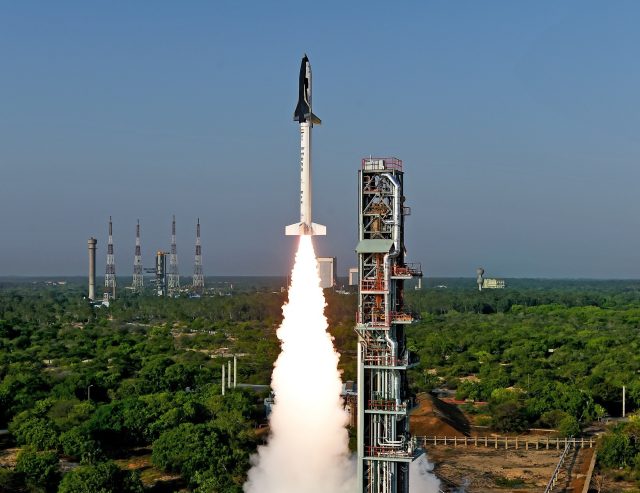
For the last several years, India has been making steady progress with its space program, including the successful insertion of a spacecraft into Mars orbit in 2014, something previously only the United States, Soviet Union, and the European Space Agency had accomplished. Now the second-most populous country in the world has taken its first significant step toward developing a reusable launch vehicle.
On Monday, the country's space program launched a winged body aerospace vehicle on its maiden test flight from the Satish Dhawan Space Center on the east coast of India. The Indian Space Research Organization, or ISRO, declared the test flight a success.
At 7am local time, the HS9 solid rocket booster fired for 91.1 seconds, lifting the RLV-TD winged body spacecraft to above 50km. After separating from the booster, the spacecraft crested to an altitude of 65km, nearly two-thirds of the way to outer space, before beginning its descent. During reentry the vehicle reached speeds of Mach 5 as it glided down to a pre-defined location in Bay of Bengal, about 450km from the launch site. Indian officials said the vehicle's first test flight successfully demonstrated technologies such as autonomous navigation, guidance and control, as well as a reusable thermal protection system.

The RLV-TD flown Monday will not be recovered from the sea, but the 1.75-ton vehicle will undergo successive test flights during the coming years to demonstrate landing capability. ISRO must also continue development of an air-breathing scramjet engine that will help power the vehicle all the way into space. The goal of the program is to cut launch costs by a factor of 10.
reader comments
80